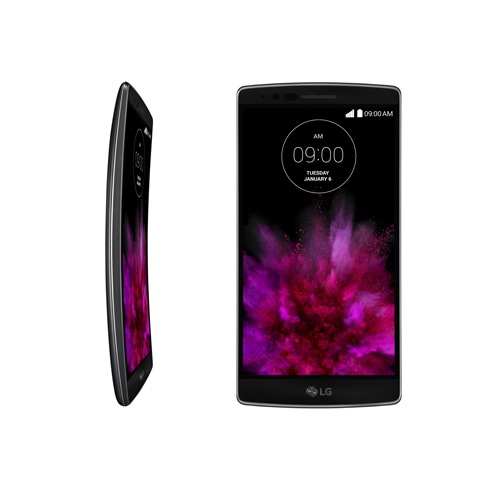Acer, Asus, LG, Lenovo and ZTE have all announced new mid- and lower-end smartphones. This flurry of new mobile devices comes just ahead of the CES event commencing in Las Vegas later today, and each of the Far Eastern device makers seemed keen to ensure their new mobiles were getting noticed early.
January 6, 2015

Acer, Asus, LG, Lenovo and ZTE have all announced new mid- and lower-end smartphones. This flurry of new mobile devices comes just ahead of the CES event commencing in Las Vegas later today, and each of the Far Eastern device makers seemed keen to ensure their new mobiles were getting noticed early.
Lenovo announced what it described as a line-up of full featured devices and accessories, including a whole new smartphone in the vendor’s portfolio, the P90. The firm has also launched Vibe X2 Pro, another edition in the Vibe mobile family.
According to Lenovo the P90 is the first smartphone powered by Intel’s Atom 64-bit processor and LTE Advanced Modem. The vendor claimed this enables the phone to reach “incredible processing speeds”, as it put it, as well as supporting LTE-Advanced FDD & TDD enabling better communication across the globe.
Other features of the P90 include a 5.5-inch FHD display, 13MP rear camera with a stacking sensor and optical image stabilisation, as well as a 5MP front-facing camera.
“The Lenovo P90 smartphone is an impressive addition to the growing portfolio of Intel-powered smartphones,” Hermann Eul, Intel’s VP of Mobile Communications said.
“As one of the first smartphones powered by Intel’s latest processor coupled with the LTE-Advanced XMM 7260 modem, people will enjoy exceptional speed and 64-bit performance that will provide users with a great mobile experience. We are proud to continue our work with Lenovo on this major milestone.”
The X2 Pro, described by Lenovo as the perfect phone for taking selfies due to its front camera flash, runs on a 64-bit Qualcomm Snapdragon Octa-Core processor, and it has a 5.3-inch FHD display. But where it differentiates from its predecessor X2 is that it has a 13MP camera both rear and front.
“As lifestyles and everyday habits become more and more mobile, consumers today are looking to devices that deliver both performance and long lasting battery life in sleek, stylish designs,” Shao Tao, VP of Lenovo’s Mobile business unit said.
“These are some of the driving forces behind our new range of mobile devices that offer blazing fast processing speeds, innovative new features and extended battery life to enhance the mobile experience of the most demanding users.”
Meanwhile, Taiwan-based multinational tech corp Acer has made a fresh stab at the smartphone market with the launch of the Liquid Z410 and Liquid Jade S. Previously having had little impact in the smartphone space, the vendor seems to have decided to try again with this pair of devices catering for the lower-end segments.
The Jade S, the higher-end of the two, features a 5-inch, 720P screen, a 13MP camera, and runs on Android 4.4, although it is upgradable to Lollipop later. It has 2GB of RAM and 16GB of storage. The Liquid Z410 has a 4.5-inch, 960 x 540 display, and a very modest camera at 5MP. It offers 1GB and 16GB of Ram and storage respectively.
Interestingly, Acer’s processor of choice for both of the LTE-enabled devices is Mediatek, a much lesser known brand than the usual suspects Qualcomm or Samsung.
Fellow Taiwanese vendor Asus has also announced a pair of new editions to its ZenFone mobile range: ZenFone 2 and ZenFone Zoom. While the ZenFone 2 attempts to give a sharper design to its older cousin, in the ZenFone Zoom Asus seems to want to offer users more in the photography front.
The ZenFone 2 has a 13MP camera, a 5.5-inch Full HD IPS+ screen, 4GB RAM, an Intel LTE-Advanced modem and 64-bit Intel Atom Z3580 processor. The ZenFone Zoom also has a 13MP camera but it comes with a 3X optical zoom, and the rear camera features a 10-element lens design with up to 12x digital zoom for even finer close-up detail.
Chinese telecoms kit and device vendor ZTE has also reportedly come out with a new handset, targeted at the US prepaid market. The grandiosely named Grand Max X Plus has a 6-inch display and a 5MP front-facing camera. The phone will be offered for $200 without a contract.
While the rest of the Asian players seem to be focusing on either refining the more traditional smartphone features such as camera, or focusing on a lower price-point, LG has decided to give it another go with the curved phone. The Korean vendor has announced the LG G Flex2, which according to the vendor “improves upon its predecessor in every way possible”.
Although the question whether the curved design actually brings any real benefit to users springs to mind, this new edition of the phone seems to really ramp-up on the specs side. At 5.5-inch the screen is slightly smaller than the previous model had (which most would probably take as a positive) and it runs on Qualcomm Snapdragon 810 processor. The display has also been upgraded to 1080 pixels and LG has laced it the Gorilla Glass with a special coating apparently making it 20% more durable. The device also has a self-healing back, which is designed to get rid of any scratches to it.
Judging from the bunch of smartphones described above, it seems the Asian players are keen to target the more affordable market segments with devices that offer increasingly good quality picture taking, and LTE-readiness is definitely a must. The mobile devices market is a crowded one and innovation seems to have peaked some time ago, which is probably one of the reasons some vendors decide to try something different albeit arguably unnecessary when it comes to the design of devices (cue: LG).
About the Author(s)
You May Also Like








.png?width=300&auto=webp&quality=80&disable=upscale)


_1.jpg?width=300&auto=webp&quality=80&disable=upscale)


.png?width=800&auto=webp&quality=80&disable=upscale)